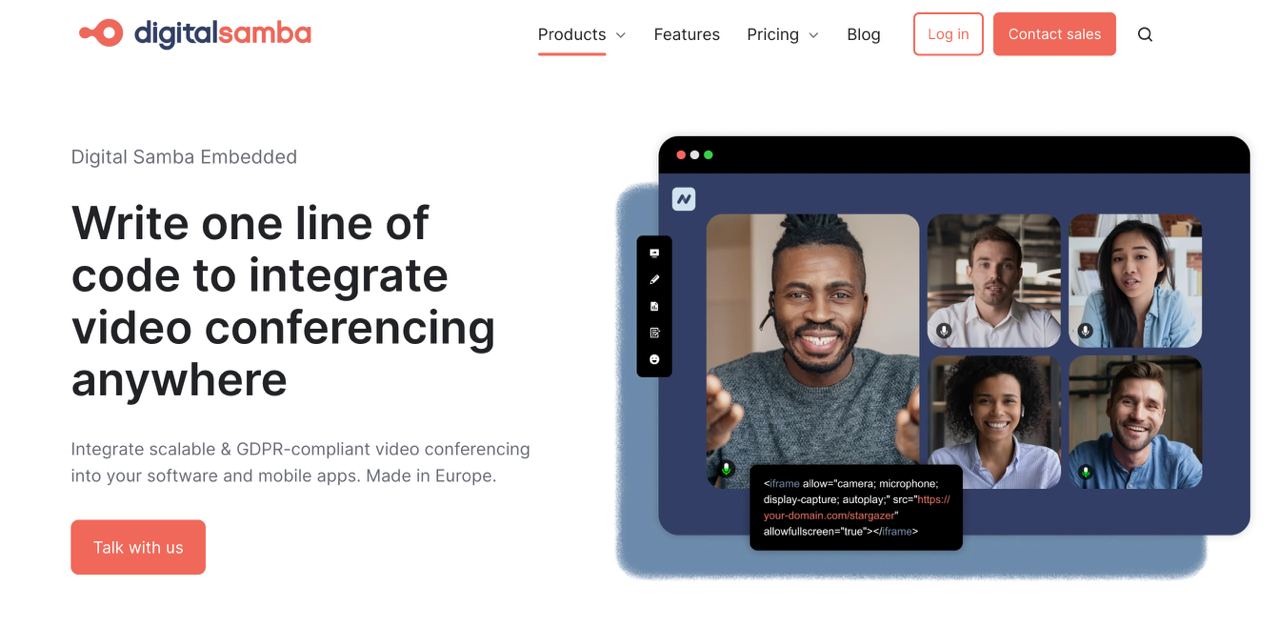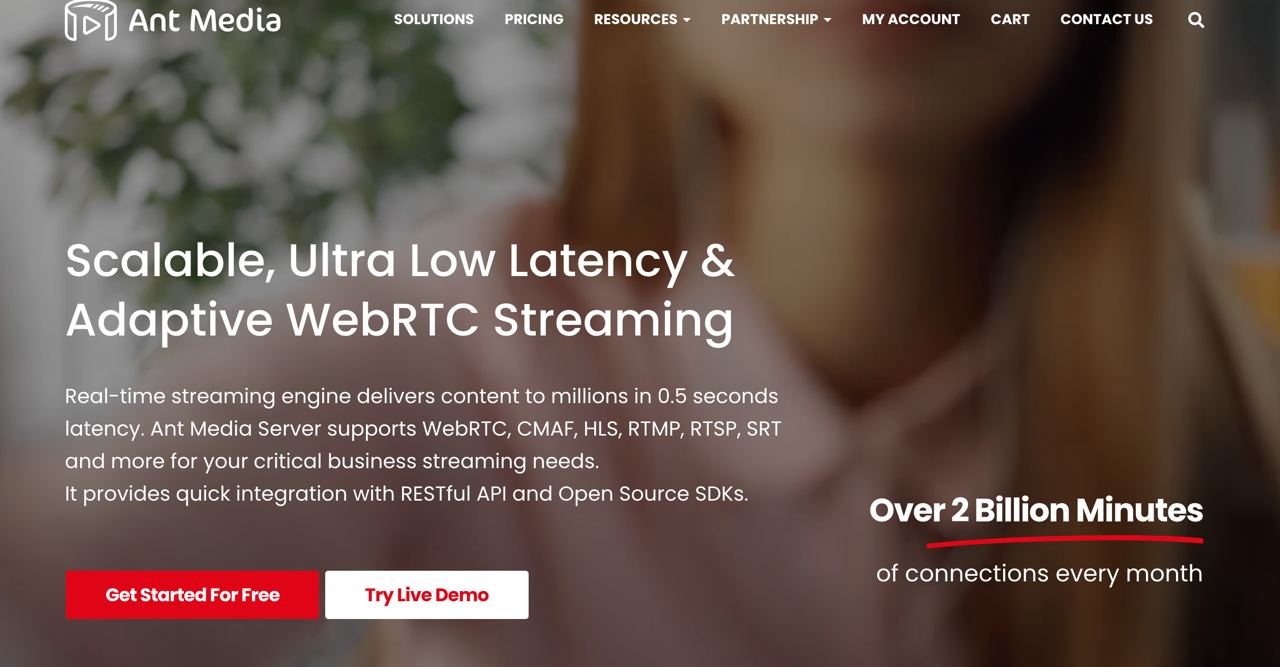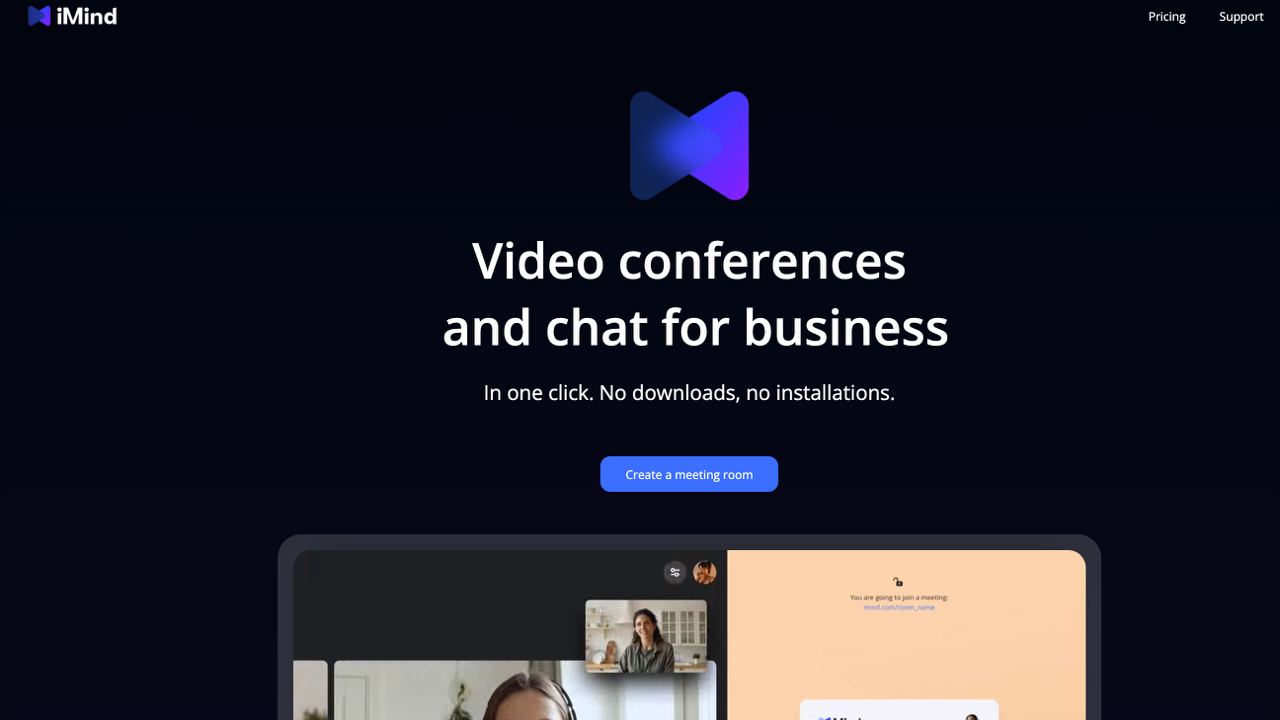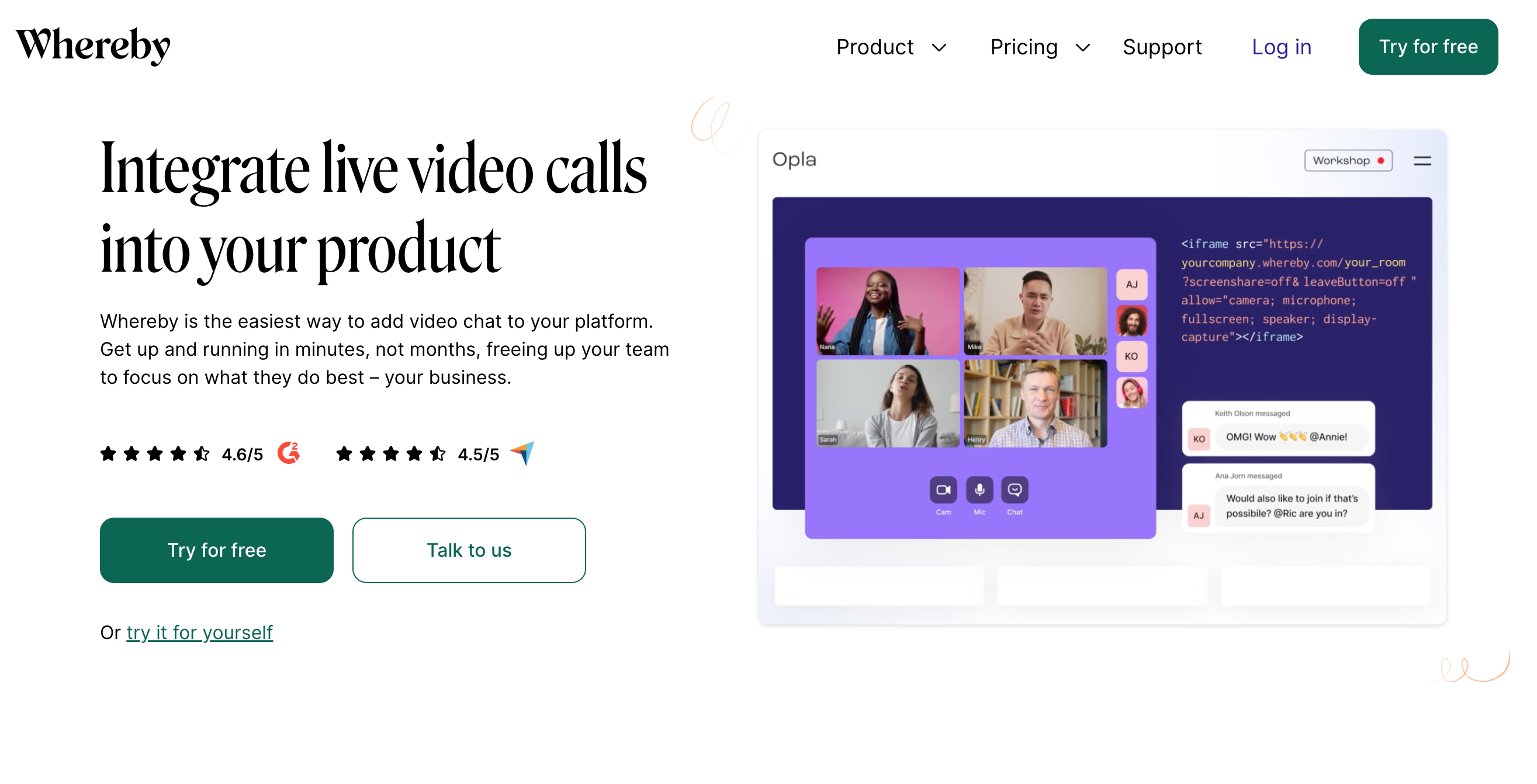A WebRTC API platform vendor is a company that provides features and functionality through an API that developers can use to quickly build web apps that use peer-to-peer live data sharing based on WebRTC.
Table of contents:
- Introduction to WebRTC API Platforms
- Web browsers and WebRTC Support
- WebRTC API vendors
- Web browsers and WebRTC Support
- WebRTC API vendors
Introduction to WebRTC API Platforms
WebRTC (Web Real-Time Communication) remains a powerful technology enabling peer-to-peer communication directly from web browsers. However, significant advancements in WebRTC technology and the increasing adoption of cloud-based services have made it easier than ever to build and scale real-time communication applications. With the rise of 5G, the technology’s capabilities for low-latency, high-quality video and audio streaming have been significantly enhanced.
WebRTC is now being widely integrated into mobile apps, IoT devices, and business collaboration tools, and its role continues to expand with innovations in AI-driven communications, smart meeting assistants, and virtual collaboration spaces.
Use cases for WebRTC include:
- Live video conferencing
- Virtual reality (VR) and augmented reality (AR) meetings
- Telemedicine and remote diagnostics
- Online education and hybrid learning environments
- Remote work collaboration
- Interactive streaming and broadcasting
Vendors offering WebRTC API’s make developing, deploying, and maintaining these applications substantially easier and more economically viable for startups and established businesses alike.
Web browsers and WebRTC Support
WebRTC support across browsers has continued to improve, with greater interoperability and more robust features for video conferencing. However, nuances remain across browsers, particularly with respect to video codecs, hardware acceleration, and network performance optimizations.
- Google Chrome
Chrome continues to be a leader in WebRTC support, with full VP8/VP9 and AV1 codec support. With the rise of 5G, Chrome has improved its handling of high-definition and low-latency video streams. Additionally, integration with Google's AI for enhanced background noise cancellation and auto-adjusting video resolution has been a key update.
- Firefox
Firefox now fully supports WebRTC, including AV1 support, and offers advanced features like screen sharing across multiple monitors and customisable video layouts. Mozilla’s focus on privacy continues, with further enhancements to its security and encryption protocols.
- Opera
Opera offers full WebRTC support with VP8 video. Opera can support H.264 through the use of extensions, plugins, and browser modification from experienced users. Opera as a browser is meant to be lightweight but still supports WebRTC applications.
- Apple Safari
Safari now offers even more stable WebRTC integration with robust support for AV1 and HEVC. Its mobile version for iOS and iPadOS is becoming widely adopted for remote learning and telehealth applications.
- Microsoft Edge
Edge, based on Chromium, has significantly improved its WebRTC capabilities with better support for low-latency real-time communication, optimized for corporate environments with features like custom audio settings and multi-device sync.
The adoption of WebRTC as a standard has not been a given for every technology company provider, and some web browsers to this day still vary in their implementation of WebRTC support, and potentially their compatibility with certain web applications.
Full browser support of WebRTC is a big commitment on the part of the web browser, so while these major browsers support WebRTC, it is not an automatic assumption that other lesser-known browsers or more likely out-of-date browsers will be able to use WebRTC applications without problems.
WebRTC API vendors
The market for WebRTC API vendors is now more competitive than ever, with several new players emerging, offering niche solutions for specific industries such as healthcare, gaming, and education. WebRTC API providers continue to evolve, providing better integration capabilities, enhanced security features, and AI-powered tools to improve user experiences.
Here’s a list of some leading WebRTC API vendors and their features:
Digital Samba
Digital Samba remains a top-tier solution for businesses looking for secure, scalable, and feature-rich WebRTC integration. It supports 4K video streaming, AI-powered noise cancellation, and real-time language translation, making it ideal for global collaboration.
- High-quality video streams
- Real-time AI translation
- Screen sharing and collaborative whiteboarding
- GDPR compliance and security features
- Breakout rooms, polling, and file sharing
Digital Samba is also natively GDPR-compliant and maintains a secure streaming infrastructure that allows for safely scalable international use without the fear of security vulnerabilities or compliance violations.
Integrate live WebRTC video into your product for a cohesive user experience. Create a free account today.
AnyMeeting
Acquired by Intermedia, AnyMeeting continues to target small businesses with its WebRTC solutions. Recent updates include tighter integrations with CRM and marketing platforms like HubSpot and Mailchimp, allowing for more streamlined sales and support workflows.
Pricing: Starts from $12 per month.
Livestorm
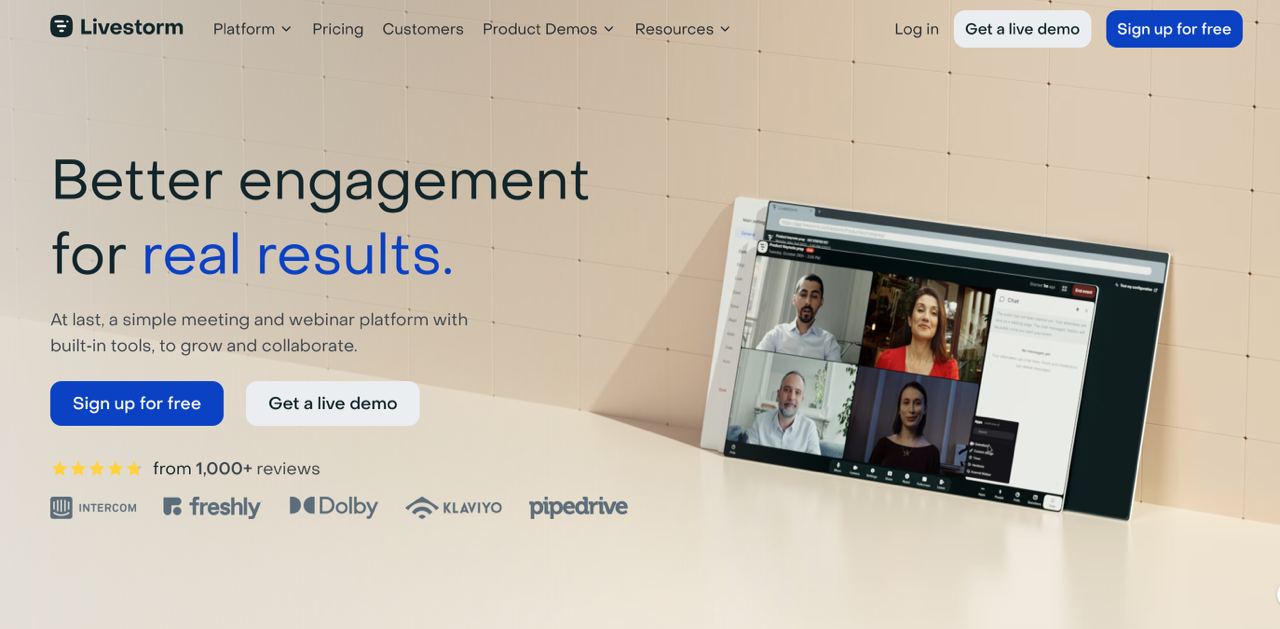
Livestorm remains a powerful platform for real-time video communication, with added support for hybrid events and webinars. It now supports high-quality video streaming for over 1,000 participants and real-time audience polling powered by AI.
Pricing: Starts from $79 per month.
Antmedia
Antmedia has solidified itself as a leader in live-streaming video solutions, expanding its WebRTC-based API to offer better live streaming for enterprise events, gaming, and high-performance use cases. They’ve recently introduced enhanced security protocols and low-latency options.
Pricing: Custom pricing for large-scale implementations.
Clan meeting
Clan Meeting has become more agile for enterprise use, offering API features tailored for integration with custom enterprise systems. Their pay-as-you-go model allows businesses to scale video usage based on demand.
Mind
Mind’s API has gained traction for supporting up to 1,000 audio participants in live streams, offering more flexibility for large-scale broadcasts and events. They also added support for mixed-reality environments, integrating with VR and AR tools.
Pricing: Custom pricing for large-scale events.
Whereby
Whereby continues to be a popular choice for teams needing a simple yet effective WebRTC solution. The major update in 2025 includes the launch of its AI-powered meeting assistant, which helps to automate scheduling, meeting agendas, and follow-up actions.
Pricing: Starts from $9.99 per month.
Developing with WebRTC through an API provider
The landscape of WebRTC API vendors is more varied, with platforms focusing on specific verticals like telemedicine, education, and live broadcasting. One of the key trends is the integration of AI features, such as automatic transcription, smart noise cancellation, and real-time language translation. These technologies are enhancing the user experience and making video communication more efficient.
Developers benefit from WebRTC API providers as they reduce the complexities of network management, server hosting, and security concerns. Platforms like Digital Samba now offer SDKs and APIs that are easier to integrate, making it faster and more cost-effective for developers to build custom applications with WebRTC.
Still have questions? Get a consult!
Digital Samba prides itself on the responsiveness of its technical support and sales consultants. Do you still have questions about using a video-calling API to fill your integration needs or to build your product?
Share this
You May Also Like
These Related Stories

WebRTC Group Video Calls: What You Need to Know

Exploring WebRTC Market Trends & Predictions for 2025




